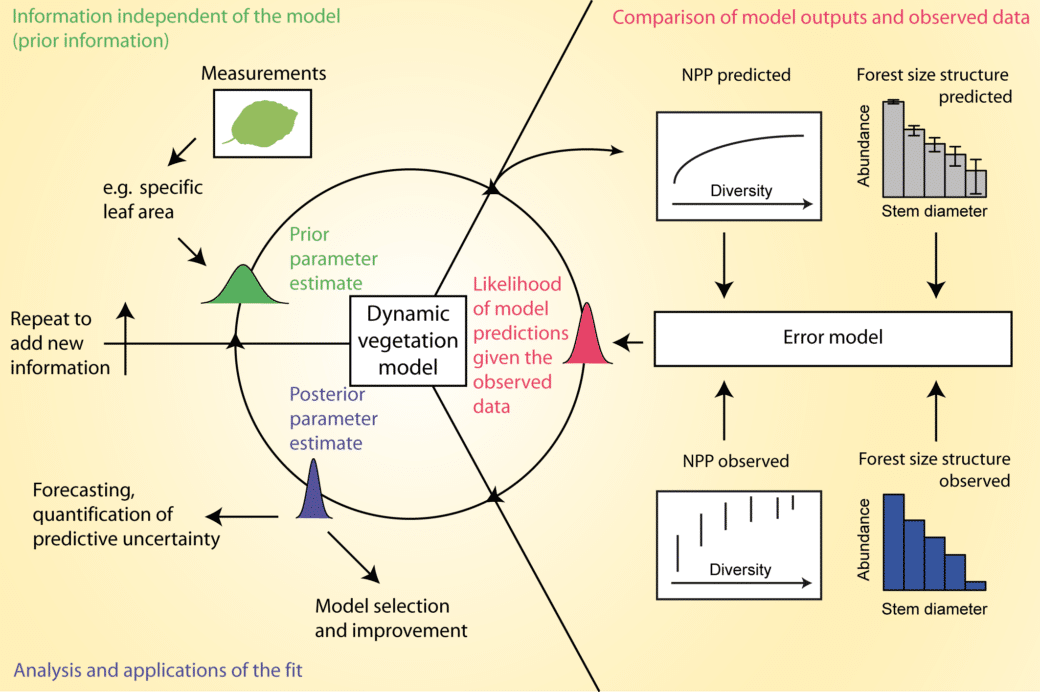Connecting process-based vegetation model to data from the Biodiversity Exploratories to unravel the mechanisms that connect biodiversity, land-use and ecosystem function

The Biodiversity Exploratories have provided empirical evidence for the influence of diversity and land use on ecosystem functions. The mechanisms that lead to this influence, however, are in many cases still not entirely clear. This poses not only a challenge to scientific curiosity, but also limits our ability to extrapolate ecosystem reactions towards environmental conditions that are not currently covered by the data from the Biodiversity Exploratories.
The objective of this project is to compare the support and relative strength of different mechanisms that have been hypothesized to affect interactions between diversity, land use and ecosystem functions. Mechanisms of particular interest are:
- Niche differentiation through growth strategies/competition for light
- Niche differentiation through rooting strategy and differential water use
- Niche differentiation through complementary nutrient / soil requirements
- Intraspecific variability of traits, which could create the same effects through functional diversity, despite no apparent species diversity
CONNECT uses the LPJ-GUESS model, a well-known and well-tested process-based vegetation model. LPJ-GUESS allows the implementation of functional differences between species, e.g. through different parameters for root, stem and crown geometries or through different physiological parameters. We will use Bayesian inference to adjust the model parameters to the local site conditions, using data from the exploratories.
Subsequently, we will use the model to examine two main questions:
- How do the mechanisms described above affect diversity across the plots and community stability within plots, and can we explain the observed functional and species diversity across the Biodiversity Exploratories from those mechanisms?
- What is the contribution of these mechanisms to diversity effects on ecosystem functions?









